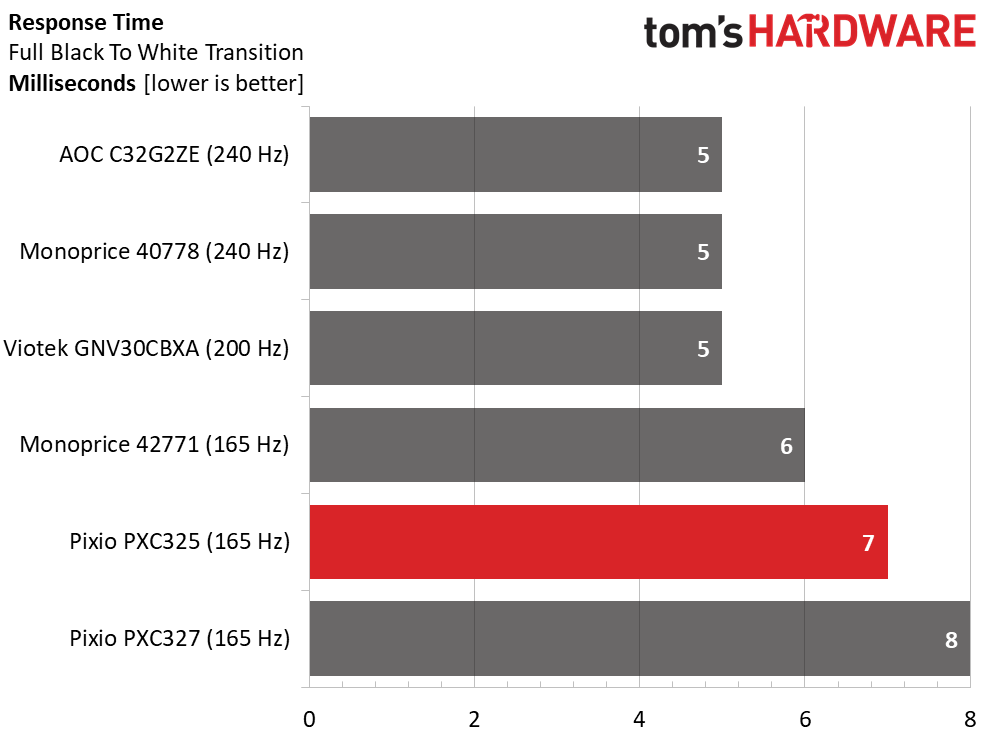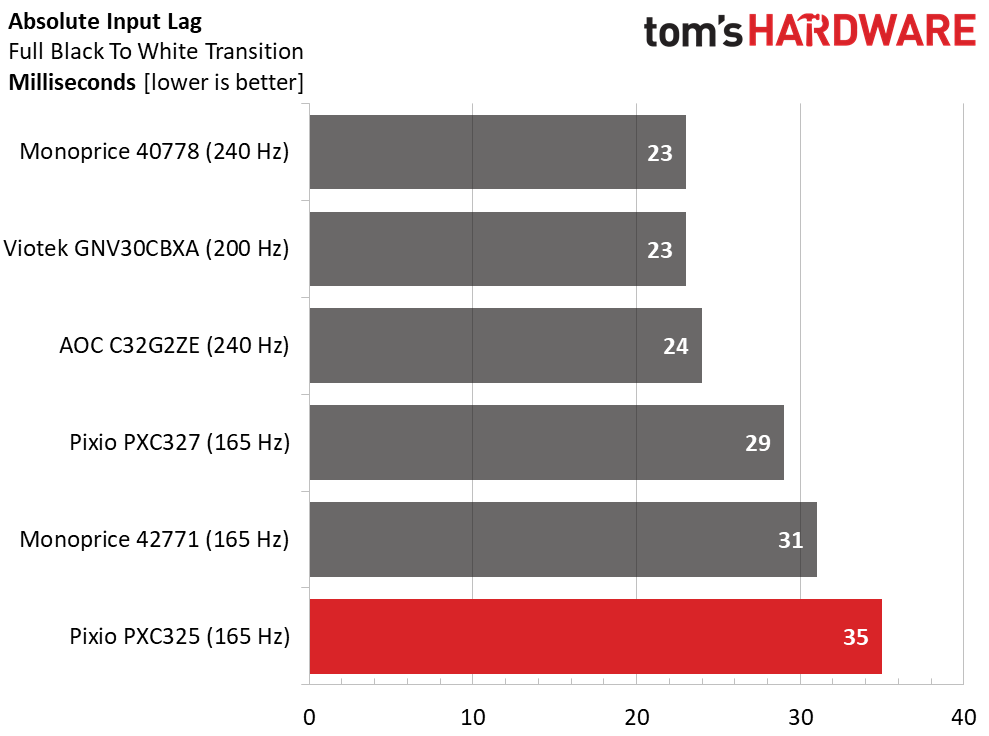Why you can trust Tom's Hardware
The PXC325 is a bit unusual, making comparisons difficult. The only other 32-inch FHD screen I’ve covered is AOC’s C32G2ZE which is included here. The other Pixio is a PXC327 which is QHD and retails for $40 more. Also here is Viotek’s GNV30CBXA, which is a 30-inch ultra-wide. The other two are 27-inch flat screens from Monoprice’s Dark Matter line, products 40778 and 42771.
Pixel Response and Input Lag
Click here to read up on our pixel response and input lag testing procedures.


165 Hz is not always faster than 144 Hz as the PXC325 proves. It draws a full frame in 7ms, which is typical performance. This will provide smooth motion but not as smooth as the faster monitors running at 200 Hz or higher.
However, I was a bit disappointed in the total lag score. The PXC327 manages to break 30ms which is plenty fast for all but the most skilled players. But 35ms is a little slow for a 165 Hz monitor. I still enjoyed playing on the PXC325, and my casual skills did not exceed its capabilities. But better gamers than I might want to go for the PXC327 instead.
Viewing Angles
VA panels aren’t known for great off-axis image quality. The PXC325 is typical of the technology. The side view shows a 50% light falloff and a reddish-green tint. The top view is much the same and a bit more washed out. In practice, a viewer sitting on-center will see a bright and colorful image. But sharing with another person would not be ideal. IPS would be better of course, but you’d give up that 4,100:1 contrast ratio.
Screen Uniformity
To learn how we measure screen uniformity, click here.
The PXC325 sample I received had no significant uniformity issues. The center zone is slightly brighter than the rest of the screen. I could see this in a completely dark room when displaying a full black pattern. In actual content, there were no visible problems. There was no bleed or glow, and color was perfectly uniform from edge to edge.
Get Tom's Hardware's best news and in-depth reviews, straight to your inbox.
Current page: Response, Input Lag, Viewing Angles and Uniformity
Prev Page Features and Specifications Next Page Brightness and Contrast
Christian Eberle is a Contributing Editor for Tom's Hardware US. He's a veteran reviewer of A/V equipment, specializing in monitors. Christian began his obsession with tech when he built his first PC in 1991, a 286 running DOS 3.0 at a blazing 12MHz. In 2006, he undertook training from the Imaging Science Foundation in video calibration and testing and thus started a passion for precise imaging that persists to this day. He is also a professional musician with a degree from the New England Conservatory as a classical bassoonist which he used to good effect as a performer with the West Point Army Band from 1987 to 2013. He enjoys watching movies and listening to high-end audio in his custom-built home theater and can be seen riding trails near his home on a race-ready ICE VTX recumbent trike. Christian enjoys the endless summer in Florida where he lives with his wife and Chihuahua and plays with orchestras around the state.

